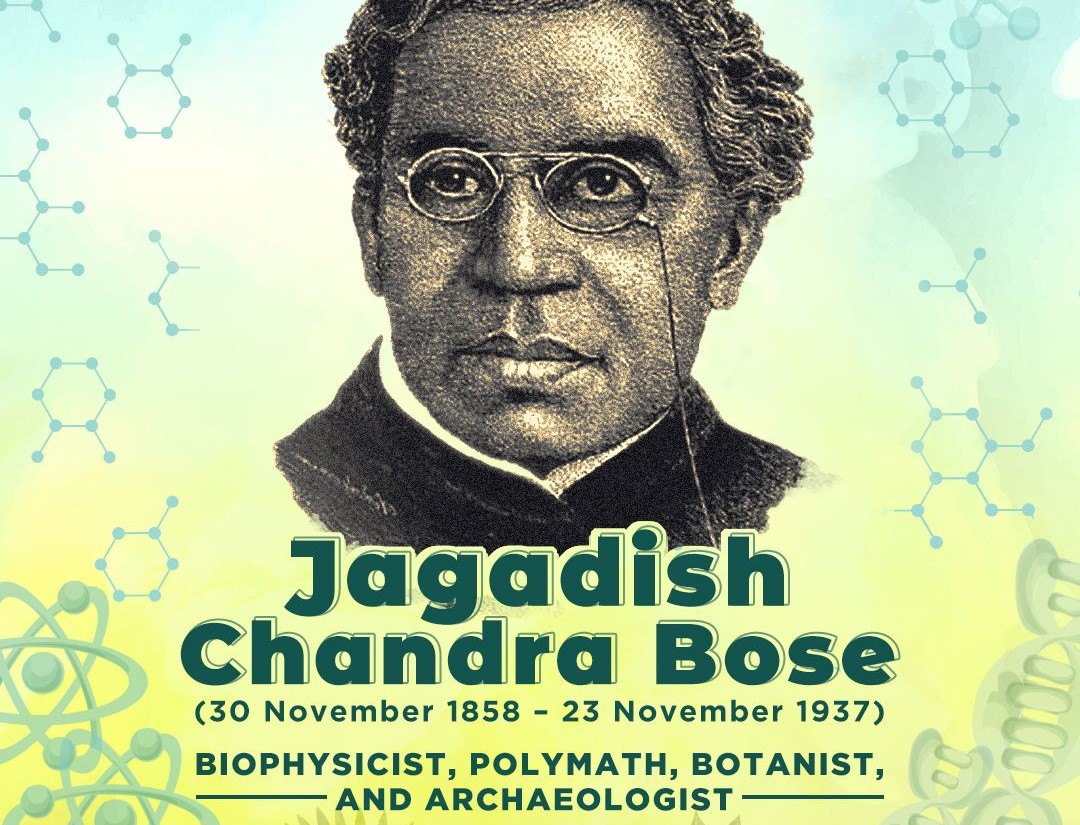Thanks to him, we understood the language of plants: Who is Jagadish Chandra Bose?
Bose, who studied a variety of subjects from photosynthesis to the effects of air, nutrients and drugs on the development of plants, became the first Indian scientist to be elected a Fellow of the Royal Society in London in 1920.

(1858-1937) Indian physicist and plant physiologist. He is best known for his work on plant growth and responses to various external stimuli. He was born on 30 November 1858 in Mymensigh, Bengal. He was first sent to a traditional village school to learn Indian culture. Later, while studying at St Xavier's College in Calcutta, a Jesuit teacher became aware of his scientific interests and supported him. Despite his family's financial difficulties, he attended the University of London in 1880 to study medicine. A year later, he transferred to Cambridge University to study science and received his doctorate in 1884. Returning to his country in 1885, Bose became a professor of physical sciences at the Presidency College that same year. Starting from 1915, he continued his studies as Emeritus Professor at the same school. In 1917 he founded the Bose Research Institute in Calcutta; In the same year, he was given the title of "Sir". Bose, who was president of this institute until his death, became the first Indian scientist to be elected a Fellow of the Royal Society in London in 1920. He died on 23 November 1937 in Giridih, Bengal.
Sir Acharya Jagadish Chandra Bose (30 November 1858 – 23 November 1937) was a Polymath with interests in Physics and Biophysics and writing science fiction.
Bose's early research on electrical conduction is an extension of the work of the pioneers of this field, J C Maxwell and H Hertz. His experiments with a susceptible device he developed between 1894 and 1897 to generate electromagnetic waves helped to understand the electromagnetic nature of light. His work led Bose to radio communication, and he conducted some of his experiments simultaneously with Marconi, who developed the radio. Still, Bose is best known for his research on the life of plants. Starting from the view that the reactions of inanimate substances to certain stimuli are similar to those of living things, Bose devoted a significant part of his scientific life to research that was not always welcomed in scientific circles. In particular, he investigated the characteristics and similarities of the responses of plant and animal tissues to various stimuli. He studied various subjects from photosynthesis to the effects of air, nutrients, and drugs on the development of plants, as well as developed new experimental methods and walled tools to carry out his research. One of his most important inventions in this field is the instrument called the crascograph, which can record even the smallest growth in plants by magnifying them ten million times.
The validity of Bose's experiments, with some of the methods and tools he developed, has been a matter of debate, both because of the methods he applied and the mystical and religious inferences he defended as a result of his research. However, he has contributed to physics with his studies on electromagnetics, and to biophysics with the tools he has developed and research on plant physiology.
-----------------------------------------------------
The legend that was Jagadish Chandra Bose
https://tfipost.com/2021/11/the-legend-that-was-jagadish-chandra-bose/
